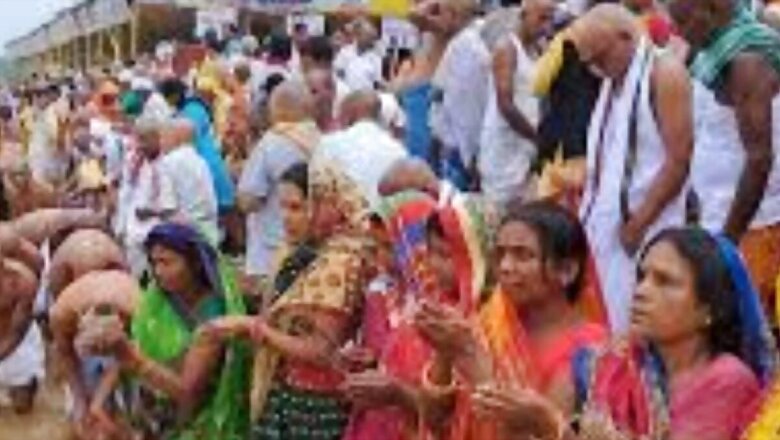
views
Shradh, also known as Tarpan, is a significant Hindu ritual performed to honour and pacify ancestors, ensuring their souls rest in peace and continue to bless the family. This ritual is traditionally observed during specific periods, with Pitru Paksha being the most notable. Pitru Paksha is a fortnight dedicated to ancestral rites, and this year, it will be observed from September 17 to October 2.
Traditionally, Shradh rituals have been performed exclusively by men. It’s important to note that women can also carry out these rites, especially when a family does not have a male heir. According to the Garuda Purana, if a daughter performs the Shradh ritual with sincerity, the absence of a son does not hinder the ritual’s efficacy. Women can also receive the blessings of their ancestors by performing Shradh and Pind Daan.
Pandit Raja Acharya from the Gaya Vedic Ministry School highlights a mythological background supporting this practice. He shares the story of Mother Sita, who performed Pind Daan for her father-in-law, King Dasharath, near Sita Kund on the banks of the Falgu River in Gaya. According to legend, Mother Sita created a sand ball for the Pind Daan, with the Falgu River, Ketaki flower, cow, and Banyan tree as witnesses. This act granted daughters-in-law the right to perform Pind Daan in the absence of a son. Since then, it has been acceptable for women, particularly in Gaya, to perform this ritual for their ancestors.
Despite this, Pandit Acharya notes that women from upper castes traditionally do not participate in Pind Daan. However, in recent years, there has been a noticeable shift, with women from various regions of India travelling to Gaya to perform these rituals. In some communities, women actively participate in Shradh ceremonies, either alongside men or independently. This change reflects broader societal shifts in attitudes toward gender roles in religious practices, indicating a move towards greater inclusivity in these sacred traditions.
















Comments
0 comment